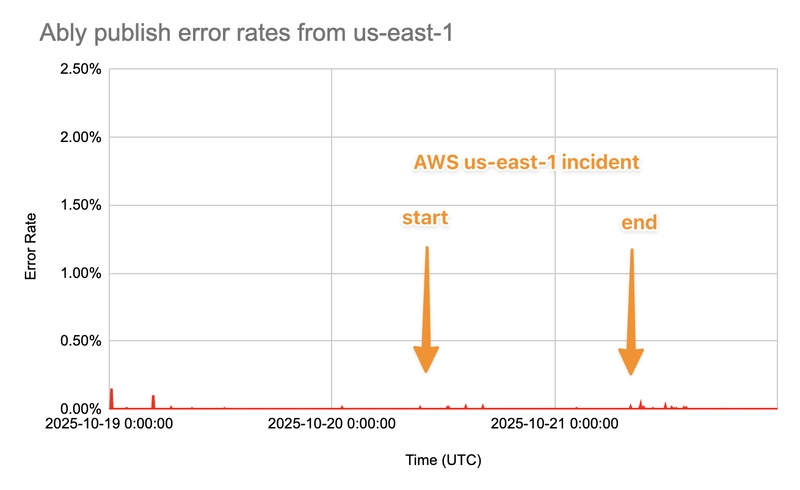“React was a mistake” — Twitter User
On September 12, Cloudflare experienced a dashboard and API outage that lasted for over an hour. It was later discovered that cloudflare DDoSed itself; the culprit ? a useEffect bug that lead to repeated API calls.
This incident reignited the never-ending debate about the superior frontend framework and if you’ve spent anytime online, it really is never-ending.
If you opened this article to find out the “winner“, that’s too damn bad. It doesn’t really matter anyway, my two cents ? Pick what feels right for you or your team, your constraints, and the problem at hand.
In this article, what we want to do instead is to dig into the data. We’ll explore how React, Vue and Svelte stack up in terms of adoption, satisfaction and trend-momentum. From those numbers you can draw your own conclusions about the future of web UI.
Let’s dive in.
How We’re Looking at the Data
The goal here isn’t to crown a new “king of JavaScript frameworks,” but to understand where the front-end ecosystem is heading, using real data.
Most of the numbers and trends in this article come directly from the latest State of JavaScript Survey, specifically the Front-end Frameworks section. It’s one of the most comprehensive developer sentiment and usage surveys out there, covering thousands of responses from developers worldwide.
Here’s how we’re approaching it:
Metrics we’re focusing on:
- Usage: how many developers actually use the framework, especially in production.
- Retention: how many would use it again which is a good measure of satisfaction.
- Happiness: the overall sentiment developers have toward each tool.
- Trends over time: how these frameworks have grown, stabilized, or declined across survey years.
Our lens:
We’re keeping it objective; numbers first, opinions later. But we’ll still interpret what those numbers could mean for the future of UI development.
Of course, it’s worth noting that surveys like this aren’t a perfect reflection of the entire industry (after all, not every developer fills them out). But they do give a pretty reliable pulse on where the developer community’s excitement and frustrations lie.
Now that we know what we’re measuring and why, let’s see what the numbers actually say.
Popularity & Adoption: The Framework League Table
Let’s start with the question that sparks most arguments at meetups and online threads: which framework is the most popular?
Unsurprisingly, React still wears the crown. According to the State of JS 2024 Survey, React remains the most widely used front-end framework, with roughly eight out of ten respondents saying they’ve worked with it in some capacity; and more than 8,500 developers using it at work. That’s a huge footprint.
Coming in second is Vue.js, holding its ground as a mature and widely trusted alternative. About 4,000 respondents reported using Vue professionally, which translates to just over half of all developers surveyed. Vue’s adoption has plateaued a bit compared to its explosive early growth years, but it’s clearly not going anywhere; it’s found its niche and holds onto it well.
And then there’s Svelte, the minimalist rising star. While only 1,400 developers in the survey said they use it at work (around a quarter of respondents), Svelte has something the others don’t: a cult-like loyalty and satisfaction score that punches way above its weight.
Here’s how they line up if we strip away all the noise and look purely at adoption numbers:
So yes — React continues to dominate by sheer numbers, but Vue and Svelte aren’t just background noise. Vue has solidified itself as the dependable second choice, while Svelte has captured the hearts (and code editors) of developers looking for something refreshingly different.
Popularity, though, only tells part of the story. What really matters is how much people actually enjoy using these tools; and whether they’d choose them again.
That’s where things start to get interesting.
Retention & Satisfaction: Love It or Leave It?
Popularity is great, but let’s be honest; just because everyone’s using something doesn’t mean they’re happy about it. Just ask a cloudflare developer 😉.
That’s why it’s worth looking at a more telling metric: retention; how many developers would willingly use a framework again. It’s a solid indicator of developer satisfaction and long-term staying power.
Here’s what the State of JS 2024 Survey tells us:
So, while React continues to lead in raw usage, Vue and Svelte take the crown when it comes to developer joy.
In other words, most React users stick around mostly because it’s the industry default. Vue and Svelte users, on the other hand, stay because they want to.
And this sentiment shows in the happiness charts too. The survey’s “Front-end Frameworks Happiness” graph paints a clear picture: React’s curve is starting to flatten, Vue’s stays consistently high, and Svelte’s line shoots to the top.
The takeaway?
If the front-end world were a dating app, React would be the long-term partner you’ve settled down with. Vue would be the balanced, reliable choice you actually enjoy spending time with. And Svelte — well, that’s the exciting new fling everyone’s talking about.
But beyond love and loyalty, the real question is: where are these frameworks headed next? Let’s zoom out and see how their stories have evolved over time.
Usage Trends Over Time: The Shifting Front-End Landscape
Frameworks, like fashion trends, have their moments. React had its meteoric rise in the late 2010s, Vue exploded shortly after, and Svelte quietly entered the chat.
If you glance at the survey’s “Ratios Over Time” chart, you’ll notice a few clear storylines:
React is no longer the scrappy newcomer; it’s the default. Its usage curve peaked and then began to level off. That’s not necessarily decline; it’s maturity. React has saturated the ecosystem so thoroughly that growth can only be incremental now.
Vue remains the solid number-two choice. After its explosive early years, it has settled into a steady rhythm. The data shows Vue holding its ground, even gaining a few points in retention, suggesting that those who adopt it tend to stick.
Svelte, meanwhile, is on a gentle but consistent upward trajectory. It doesn’t have the mass adoption of React or Vue (yet), but its curve is pointing in exactly the right direction; growing steadily year after year.
The survey summary even puts it succinctly:
_“Vue managed to keep its number two spot — as well as gained a whopping three spots in terms of retention percentage! Meanwhile, Svelte usage is increasing at a steady pace, while it continues to top the rankings in terms of overall positive opinions.”
_
In simpler terms: React’s dominant, Vue’s stable, and Svelte’s on the rise.
So where does that leave us?
It paints a front-end ecosystem that’s diversifying rather than consolidating. Instead of one framework crushing all others, we’re seeing multiple strong players thriving in their own lanes — and that’s actually great news. It means developers have options that fit different project needs and preferences.
What This Means for the Future of Web UI
If there’s one thing the State of JS 2024 data makes clear, it’s that the front-end landscape isn’t about one framework winning anymore — it’s about evolution and coexistence.
React has solidified its role as the dependable heavyweight — the foundation of countless production apps and entire ecosystems. Vue continues to thrive as the pragmatic alternative, offering a gentle learning curve without sacrificing power and with its latest approach to reactivity system, it’s now believed to be the fastest of them all. And Svelte? It’s quietly shaping the future, reminding everyone that innovation often starts at the fringes.
We’re entering a phase where the “React vs. Vue” debate feels outdated. Each framework now appeals to a different kind of developer mindset
The future of Web UI isn’t about choosing sides; it’s about choosing fit. As new tools like Solid, Qwik, and Signals-based reactivity models gain traction, one truth remains: the front-end world never stands still.
So whether you’re a React loyalist, a Vue enthusiast, or a Svelte experimenter, the key is to stay curious, adaptable, and willing to unlearn. Because in this space, today’s underdog might just be tomorrow’s default.





